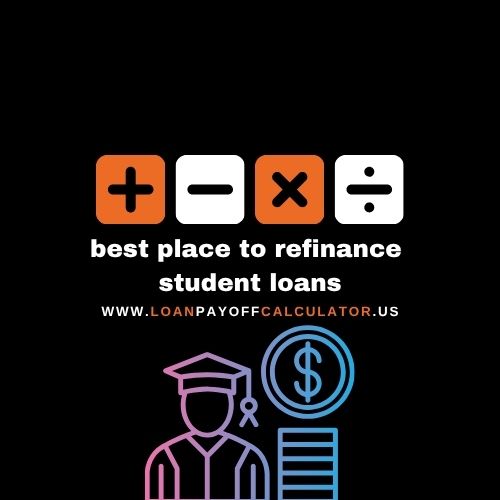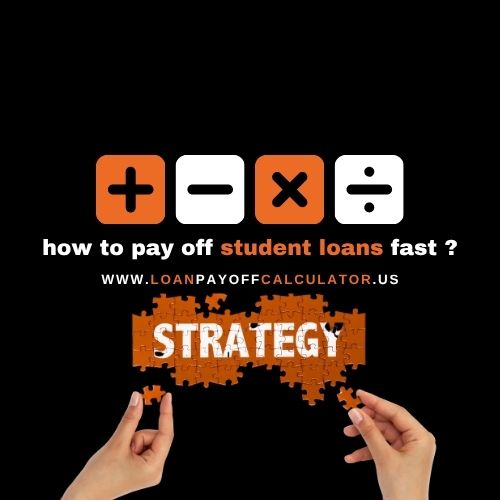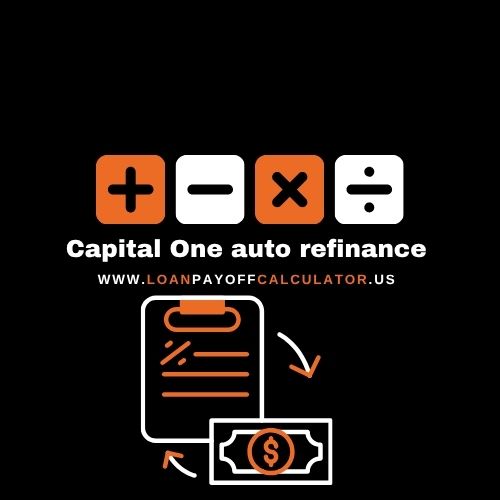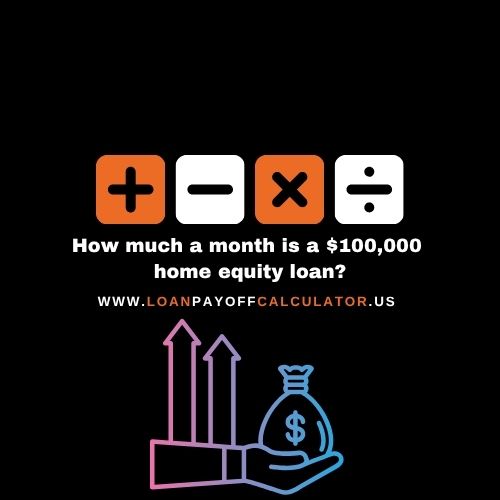Best Place to Refinance Student Loans – Compare Top Lenders
The best place to refinance student loans depends on your credit score, income, and financial goals.
Right now, leading lenders like SoFi, Earnest, and Credible stand out for low rates, flexible terms,
and valuable borrower perks.
If you’re searching for the best place to refinance student loans, here’s how to compare your options
and choose confidently.
How Student Loan Refinancing Works
Student loan refinancing means replacing one or more of your existing student loans
with a new private loan—ideally at a lower interest rate or with a repayment term that better fits your needs.
The refinance process is straightforward and can help you save money over the life of your loan.
- Lower interest costs: Qualifying for a reduced APR means you’ll pay less in interest overall.
- Reduced monthly payment: Extending the term lowers your monthly bill, freeing up cash flow.
- Faster payoff: Choosing a shorter term increases monthly payments but helps you eliminate debt sooner.
Understanding the refinance process helps you decide whether refinancing is the right move for your financial situation.
Best Places to Refinance Student Loans
The best student loan refinance companies offer competitive interest rates, flexible repayment terms,
and borrower benefits that can save you money over time. Here are some of the top lenders to consider if you’re looking for
better refinance student loan rates right now:
- SoFi: Competitive fixed and variable rates, member perks, and unemployment protection.
- Earnest: Highly flexible repayment options with the ability to pick your monthly payment date.
- Laurel Road: Strong choice for medical professionals with tailored refinancing programs.
- Credible (Marketplace): One-stop platform that lets you compare multiple lenders instantly.
| Lender | Rates (APR) | Terms | Highlights |
|---|---|---|---|
| SoFi | As low as ~4.5% | 5–20 years | Member perks, unemployment protection |
| Earnest | From ~4.7% | 5–20 years | Customizable payments, flexible dates |
| Laurel Road | From ~5.0% | 5–20 years | Tailored for medical professionals |
| Credible (Marketplace) | Varies by lender | 5–20 years | Compare multiple lenders instantly |
Comparing multiple lenders side by side ensures you find the lowest rate and the repayment terms that fit your budget.
Factors to Consider Before Refinancing
Choosing the best place to refinance student loans isn’t just about the lowest advertised rate.
You’ll want to weigh several key factors to make sure refinancing truly benefits your situation:
- Credit score: Most lenders require at least 680–700, but scores above 740 usually unlock the lowest APRs.
- Debt-to-income ratio (DTI): A lower DTI (ideally under 40%) shows lenders you can comfortably handle new payments.
- Fixed vs. variable rates: Fixed APRs mean predictable monthly payments; variable APRs may start lower but can rise over time.
- Loss of federal benefits: Refinancing federal loans with a private lender means giving up options like income-driven repayment (IDR) and Public Service Loan Forgiveness (PSLF).
- Loan term: Shorter terms = higher monthly payments but less total interest. Longer terms = lower monthly payments but more interest overall.
Balancing these factors helps you find the right lender and structure for your financial goals.
Factors to Consider Before Refinancing
Before deciding where to refinance, keep in mind these important factors that affect your eligibility and long-term benefits:
- Credit score: A score above 680–700 improves your chances, and 740+ usually qualifies you for the best rates.
- Stable income and job: Lenders want to see steady employment and reliable income to ensure you can manage repayment.
- Fixed vs. variable rates: Fixed rates provide predictable monthly payments, while variable rates may start lower but can rise with the market.
- Loss of federal protections: Refinancing federal loans into private loans means giving up options like Income-Driven Repayment (IDR) plans and Public Service Loan Forgiveness (PSLF).
Considering these factors ensures that refinancing supports your financial goals without unexpected drawbacks.
Pros & Cons of Refinancing Student Loans
Pros
- Lower APR: Save money with reduced interest rates.
- One simple payment: Combine multiple loans into a single monthly bill.
- Faster payoff: Shorter terms can help you eliminate debt sooner.
Cons
- Lose federal protections: No more IDR plans or PSLF eligibility.
- Possible origination fees: Some lenders charge upfront costs for refinancing.
- Cosigner may be needed: If your credit or income isn’t strong enough alone.
Weighing the pros and cons helps you decide whether refinancing truly supports your financial strategy.
Example Scenarios of Student Loan Refinancing
To see how refinancing plays out in real life, here are two borrower profiles based on typical U.S. student loan options
available through lenders like SoFi, Earnest, and Laurel Road. These examples use realistic market rates
and terms—without hidden fees or marketing gimmicks.
Borrower A – Lower Interest, Big Savings
Sarah has $40,000 in student loans at 7% APR over 10 years.
She refinances with Earnest at 4% APR fixed, same term (10 years).
- Old monthly payment: ~$464
- New monthly payment: ~$405
- Total savings: about $7,100 in interest over the life of the loan
👉 Good option if your credit score is strong (740+) and you want to lock in predictable, lower payments.
Borrower B – Lower Monthly Bill, More Interest
James owes $60,000 in student loans at 6.5% APR with 10 years left.
He refinances through SoFi to a 20-year term at 6.0% APR.
- Old monthly payment: ~$682
- New monthly payment: ~$430
- Total interest paid: ~$43,000 vs. ~$22,000 if he stayed with 10 years
👉 Better if you need immediate breathing room on your budget, but it costs much more long-term.
These examples highlight the trade-offs: refinancing can save thousands if you secure a lower APR,
but stretching your term too far increases the total interest you’ll pay. Always compare offers carefully
and read the fine print.
Student Loan Refinancing FAQs
1. Who has the lowest student loan refinance rates?
Rates change often, but lenders like SoFi, Earnest, and Laurel Road frequently advertise some of the lowest fixed and variable APRs in the market.
2. Can I refinance federal student loans?
Yes, but once you refinance federal loans into a private loan, you lose access to federal protections such as income-driven repayment (IDR) plans and Public Service Loan Forgiveness (PSLF).
3. Does refinancing hurt my credit score?
Refinancing requires a hard credit inquiry, which may cause a small, temporary dip in your score. Over time, consistent on-time payments can help improve it.
4. What is the minimum credit score to refinance?
Most lenders look for at least a 650–680 credit score, but the best refinance rates are usually available to borrowers with scores of 720 or higher.
Try Our Exclusive Loan Tools — Built for Smarter Payoff
These free, premium-grade calculators were designed for real borrowers like you.
Plan faster student loan payoff, reduce interest, and compare repayment strategies with ease.
Loan Payoff Calculator →
Loan Interest Calculator
Loan Comparison Calculator
Loan Refinance Calculator
No guesswork. No hidden fees. Just the smartest way to manage any loan payoff.
Conclusion: Finding the Best Place to Refinance Student Loans
The best place to refinance student loans ultimately depends on your credit profile, income stability, and repayment goals.
Comparing lenders side by side ensures you lock in the lowest rate and choose terms that fit your budget.
✅ Quick tips before you refinance:
- Double-check whether you’ll lose federal benefits like IDR or PSLF by moving to a private lender.
- Watch for origination fees or prepayment penalties—many top lenders don’t charge them.
- Ask about deferment or unemployment protection, which can give peace of mind during tough times.
- Run the numbers with a refinance calculator to see your true long-term cost.
For official guidance and repayment strategies, visit the
Federal Student Aid – Repayment Options
.







